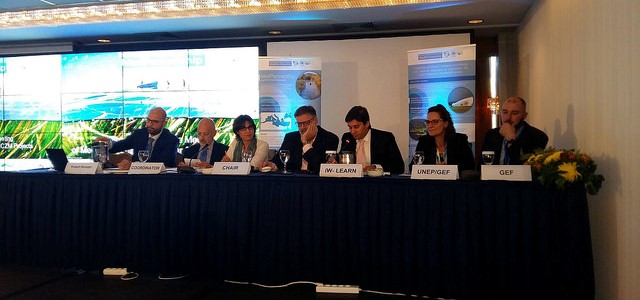Characteristics
Over the coming decades heavy investment is going to be needed to keep abreast of a range of water-related challenges. These challenges include:
Overcoming water stress and inexorably rising demand for water in many regions;
- Arresting the unsustainable mining of ground water;
- Addressing pollution of surface water caused by agricultural effluent and untreated wastewater;
- Catching up with the backlog of populations remaining without access to clean water and basic sanitation;
- Protecting the growing numbers at risk from flooding;
- Restoring and enhancing the ecosystem functions of floodplains and wetlands (essential “green infrastructure”).
The cost of all these measures is potentially enormous. The costs are spread across the economy, and a sizeable proportion will fall on individual households and private companies. A high proportion of the annualised costs of attaining the water and sanitation are not even investment costs, but represent recurring operational, maintenance and replacement outlays.
It is therefore clear that no single investment plan will suffice. Because few countries have a single institution responsible for water, the task of planning and budgeting for water in all its aspects, could well be divided amongst a number of ministries and agencies (water supply, irrigation, energy, agriculture, health, environment, housing, etc.).
Creating a machinery of consultation amongst these key partners is a crucial first step, followed by coordination of policy actions – recognising that water is an increasingly vital cross-cutting issue. The Water Cost Curves methodologies, which includes building short term and long-run average cost curves, are ways of identifying and ranking alternative options for addressing future water scarcity. It can also be used in the choice of options for increasing climate resilience.
Within such broader frameworks, investment plans might include:
- Strategic Financial Planning, suitable for water supply and sanitation (see Tool A3.02);
- Multi-Year Investment Planning Tool, designed for municipalities;
- Financial Planning Tool for Water Utilities (e.g developed for the Eastern Europe, Caucasus and Central Asia region). Water utilities and other providers can also tap into benchmarks maintained on international datasets such as the World Bank’s IBNET.
Lessons learned
- Many investment decisions affecting water are taken in sectors such as power, agriculture, international trade, industry without direct reference to their water implications, or based on inconsistent assumptions about the availability of water. Better consultation and coordination amongst all parties is therefore essential.
- Capital investment is only part (and in some domains, a minor part) of the costs of managing water; provision also needs to be made for recurring costs, e.g. O&M.
- Climate resilience is a growing, and over-arching, issue for water planning, and frameworks have been developed to deal with this for the purpose of investment planning. Planning for future climate resilience is little different from coping with the existing level of climatic variance and the incidence of extreme events.
- Both individual water users and private companies are parties to water investment and funding decisions; their interests need to be considered and their incentives/sanctions aligned with the national interest.
- A suitable legal and fiscal framework needs to be created in order to attract private finance and investment in water.

